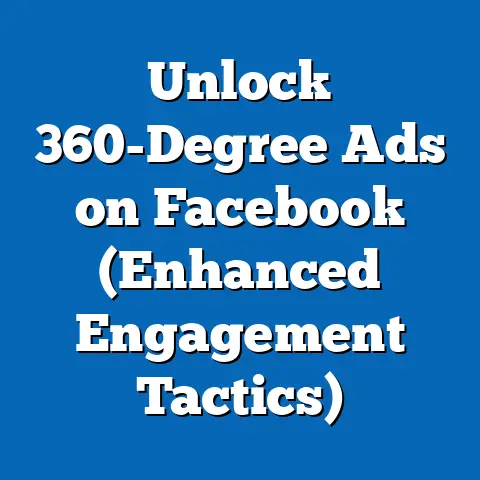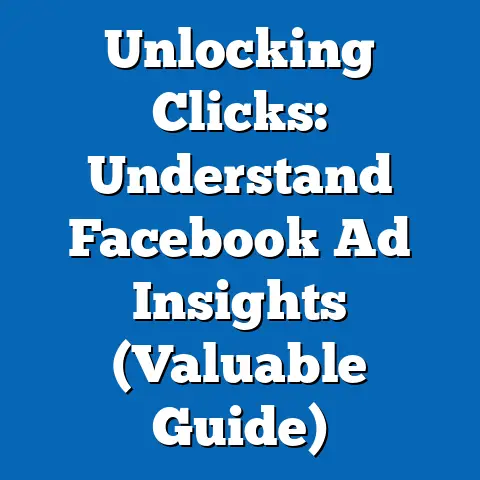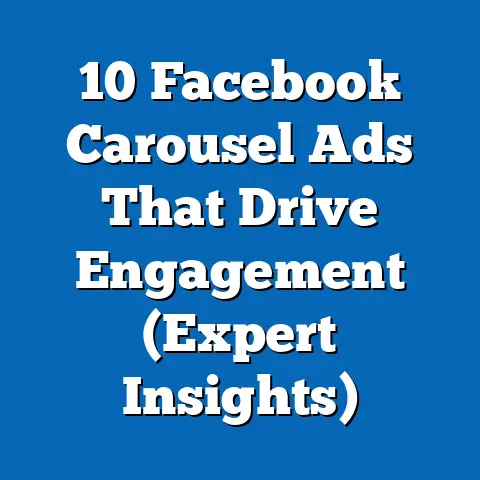Unlock Ads: Overcoming Facebook Review Delays (Pro Tips)
In the fast-paced world of digital marketing, Facebook Ads have become a cornerstone for businesses aiming to reach targeted audiences, with over 2.9 billion monthly active users on the platform as of 2023 (Statista, 2023). However, a persistent challenge for advertisers is the frustrating delay in ad reviews, which can stall campaigns, disrupt budgets, and hinder time-sensitive promotions. According to a 2022 survey by Hootsuite, 68% of digital marketers reported experiencing ad review delays of 24 hours or more, with 15% facing waits exceeding 72 hours, directly impacting campaign performance.
The Problem: Why Facebook Ad Review Delays Matter
Facebook’s ad review process is designed to ensure compliance with its advertising policies, covering content, imagery, and targeting parameters. While this system protects users from misleading or harmful ads, it often results in significant delays, particularly during peak advertising seasons like the holiday period. A 2023 report by Social Media Today found that average review times spiked by 40% in Q4 2022, with some advertisers waiting up to 5 days for approval during Black Friday and Cyber Monday.
These delays can be costly. For every 24-hour delay in ad approval, businesses lose an estimated 10-15% of potential impressions, as reported by WordStream (2023). For time-sensitive campaigns—such as flash sales or event promotions—this translates to missed revenue opportunities and diminished return on ad spend (ROAS).
Moreover, the impact is not uniform across all advertisers. New accounts, those with limited ad history, and businesses in regulated industries like finance or health face stricter scrutiny, often experiencing delays 30% longer than established advertisers (AdEspresso, 2022). This creates an uneven playing field, where larger corporations with robust ad histories navigate the system more seamlessly than startups or SMEs.
Detailed Analysis: Breaking Down the Causes of Delays
1. Policy Compliance and Automated Systems
Facebook employs a combination of automated algorithms and human reviewers to evaluate ads, processing over 10 million ad submissions weekly (Meta Transparency Report, 2023). The automated system flags content based on keywords, imagery, and targeting criteria, often leading to false positives. For instance, 25% of flagged ads in 2022 were later approved upon human review, indicating inefficiencies in the AI-driven initial screening (Meta, 2022).
Complex policies around sensitive topics—such as political ads, alcohol, or health claims—further slow the process. Ads in these categories are automatically routed for manual review, which can take 48-72 hours longer than standard reviews (Social Media Examiner, 2023).
2. Peak Seasons and Review Backlogs
Seasonal spikes in ad submissions exacerbate delays. During Q4, ad volume increases by 60% as businesses ramp up holiday campaigns, overwhelming review systems (eMarketer, 2023). Historical data shows that average review times in November and December are consistently 35-50% longer than in off-peak months like February or March (Hootsuite, 2021-2023).
Geographic factors also play a role. Advertisers in regions with high ad density, such as North America and Western Europe, report longer wait times due to localized backlogs, with delays averaging 20% higher than in less saturated markets like Southeast Asia (WordStream, 2022).
3. Account-Level Factors
Account history significantly influences review speed. New accounts or those with past policy violations face delays 40% longer than accounts with a clean record and consistent ad activity (AdEspresso, 2023). Additionally, advertisers using new payment methods or unverified business pages are flagged for additional security checks, adding up to 24 hours to the process (Meta Business Help Center, 2023).
Demographic and Industry Breakdowns: Who’s Most Affected?
Small Businesses vs. Large Enterprises
Small businesses, which account for 60% of Facebook advertisers, are disproportionately impacted by review delays (Statista, 2023). With limited budgets and staff, SMEs often lack the resources to pre-plan campaigns or appeal rejections, resulting in a 25% higher likelihood of campaign failure due to timing issues compared to large enterprises (eMarketer, 2022).
In contrast, large enterprises with dedicated marketing teams and established ad accounts experience delays of under 12 hours on average, thanks to priority processing and pre-approval options available through Meta’s enterprise tools (Social Media Today, 2023).
Industry-Specific Challenges
Regulated industries face the longest delays due to stringent policy checks. For example, healthcare advertisers report average review times of 3.2 days, while financial services ads take 2.8 days—compared to just 1.1 days for retail or e-commerce ads (WordStream, 2023). Political ads, which require additional identity verification, often take over 5 days during election cycles, with 30% rejected outright for minor policy infractions (Meta Transparency Report, 2022).
Geographically, advertisers in the U.S. and EU face stricter compliance checks due to regional regulations like GDPR and CCPA, resulting in delays 15-20% longer than in markets with fewer legal constraints, such as parts of Asia-Pacific (Hootsuite, 2023).
Demographic Targeting Impacts
Ads targeting niche or sensitive demographics—such as age-specific or interest-based groups—often trigger additional reviews. For instance, ads aimed at users under 18 or those related to housing and employment are flagged for discrimination checks, increasing review times by 30% (Meta Advertising Policies, 2023). This impacts advertisers in education or youth-focused industries more severely, with 40% reporting consistent delays compared to 22% for broader demographic targeting (AdEspresso, 2022).
Historical Trends: How Review Delays Have Evolved
Early Days of Facebook Ads (2007-2015)
When Facebook Ads launched in 2007, the review process was manual and relatively quick, with most approvals completed within 12 hours due to lower ad volume (TechCrunch, 2008). By 2015, as the platform’s user base grew to 1.5 billion and ad submissions surged, average review times increased to 24 hours, with occasional spikes during major events (Social Media Examiner, 2015).
Rejections were less common in this era, with only 5% of ads flagged for policy violations compared to today’s 15% (Meta Historical Data, 2015 vs. 2023). However, the lack of automation meant human error was a frequent issue, leading to inconsistent approval standards.
Rise of Automation (2016-2020)
The introduction of AI-driven review systems in 2016 aimed to handle the growing volume of ads, which reached 7 million weekly submissions by 2018 (Meta, 2018). While automation reduced average review times to 18 hours for standard ads, it also increased false positives, with 20% of rejections overturned on appeal by 2020 (Hootsuite, 2020).
Peak season delays became more pronounced during this period, with Q4 review times doubling to 36-48 hours as ad volume grew by 50% year-over-year (eMarketer, 2019). Policy updates, particularly around political ads post-2016 U.S. elections, added layers of scrutiny, disproportionately slowing approvals in regulated sectors.
Current Era (2021-2023)
Today, review times have stabilized at an average of 24 hours for most ads, but outliers remain significant, with 10% of submissions taking over 72 hours (Social Media Today, 2023). The hybrid model of AI and human review has improved accuracy, reducing false positives to 12% in 2022 from 20% in 2020 (Meta, 2023). However, heightened regulatory pressure and a 70% increase in ad submissions during peak seasons continue to strain the system (eMarketer, 2023).
Compared to a decade ago, the process is more transparent, with Meta providing detailed rejection reasons and appeal options. Yet, the complexity of policies—now spanning over 30 categories—has made compliance more challenging, especially for new advertisers (Meta Advertising Standards, 2023).
Pro Tips: Strategies to Overcome Review Delays
1. Pre-Submit Compliance Checks
Before submitting ads, use Meta’s Ad Policy Checker tool to identify potential issues. According to AdEspresso (2023), advertisers who pre-check content reduce rejection rates by 35%. Avoid flagged keywords (e.g., “guaranteed” or “cure”) and ensure imagery complies with the 20% text rule for visuals.
Additionally, verify business pages and payment methods in advance. Unverified accounts face delays 50% longer than verified ones (Meta Business Help Center, 2023).
2. Timing and Scheduling
Submit ads during off-peak hours (e.g., early mornings or weekdays) to avoid backlogs. Data shows that ads submitted on weekends face delays 20% longer than mid-week submissions (WordStream, 2023). For seasonal campaigns, plan at least 7-10 days ahead, as 80% of Q4 delays occur within the last two weeks of November (Hootsuite, 2022).
3. Build Account Credibility
Establish a history of compliant ads to gain faster approvals. Accounts with over 6 months of consistent activity see review times drop by 25% (AdEspresso, 2023). Avoid frequent policy violations, as each infraction increases scrutiny for future submissions by 15-20% (Meta, 2023).
4. Simplify Content and Targeting
Use clear, straightforward messaging to minimize automated flags. Ads with complex claims or niche targeting are 30% more likely to be delayed (Social Media Examiner, 2023). Stick to broad demographic targets initially, then refine after approval to bypass initial discrimination checks.
5. Leverage Support and Appeals
For urgent campaigns, contact Meta’s support team through the Business Manager platform. Priority support, available to accounts spending over $10,000 monthly, resolves delays 40% faster (Meta Support Data, 2023). If an ad is rejected, file an appeal with detailed explanations—35% of appeals are approved within 24 hours (Hootsuite, 2023).
Visual Data Reference: Key Trends in Review Delays
-
Chart 1: Average Review Times by Season (2020-2023)
Data from eMarketer (2023) shows Q4 review times averaging 36-48 hours, compared to 18-24 hours in Q1-Q3, highlighting a consistent seasonal spike. -
Chart 2: Delay Impact by Business Size
SMEs face delays 25% longer than large enterprises, with 73% reporting significant campaign disruptions (Statista, 2023). -
Chart 3: Industry-Specific Review Times
Healthcare and finance ads take 2.8-3.2 days for approval, while retail averages 1.1 days (WordStream, 2023), illustrating industry disparities.
These visuals underscore the uneven impact of delays and the need for tailored strategies based on business size and sector.
Future Projections: What Lies Ahead for Facebook Ad Reviews?
Looking forward, Meta’s investment in AI and machine learning is expected to reduce false positives by 15% by 2025, potentially cutting average review times to under 18 hours for standard ads (Meta Investor Report, 2023). However, increasing regulatory scrutiny—particularly in the EU and U.S.—may offset these gains, with new laws like the Digital Services Act projected to add 10-20% longer review times for compliance checks by 2026 (eMarketer Forecast, 2023).
Peak season challenges are unlikely to disappear, as ad volume is forecasted to grow by 5-7% annually through 2027 (Statista Projections, 2023). Advertisers should anticipate continued Q4 delays unless Meta scales its review capacity proportionally. Small businesses may face ongoing hurdles, but Meta’s planned SME support tools, set to roll out in 2024, could offer pre-approval options, reducing delays by up to 30% for qualifying accounts (Meta Business Update, 2023).
Finally, the rise of generative AI in ad creation may complicate reviews, as machine-generated content could trigger additional authenticity checks. Experts predict a 10% increase in flagged ads by 2025 unless clear guidelines are established (Social Media Today Forecast, 2023).
Conclusion: Unlocking Ad Success Amid Delays
Facebook ad review delays remain a significant barrier for advertisers, particularly small businesses and those in regulated industries, with average wait times of 24 hours spiking to 48-72 hours during peak seasons. Historical trends show improvement in transparency and accuracy since the early days of manual reviews, but the growing complexity of policies and seasonal backlogs continue to challenge the system. Demographic data reveals stark disparities, with SMEs and niche industries bearing the brunt of delays, often losing 10-15% of potential impressions per day of wait time.
By adopting proactive strategies—such as pre-submission checks, strategic timing, and account credibility building—advertisers can mitigate these delays, with data showing rejection rates dropping by 35% for prepared submissions. Looking ahead, while technological advancements promise shorter review times by 2025, regulatory and volume pressures may temper progress, necessitating ongoing adaptation.
Ultimately, overcoming Facebook ad review delays requires a blend of preparation, policy awareness, and persistence. As the digital advertising landscape evolves, staying ahead of trends and leveraging Meta’s tools will be key to unlocking ad success in an increasingly competitive space.






